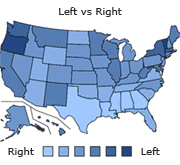Ruminant Parasitology
PCC VT program: 1st year Parasitology with Dr. Haveman. Purposly designed for tech students in this class of 2008 to study parasites. Class feel free to make more test for us to practice. I probably will.
Covering ruminant parasitology. This includes all that was on the ruminant test but rephrased and rearraged so that you can't just read the right answer off your test immediately. -I just looked at the test, I don't know whats with on the 1st two Qs. I can't edit them.

